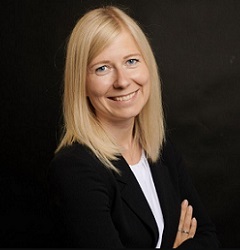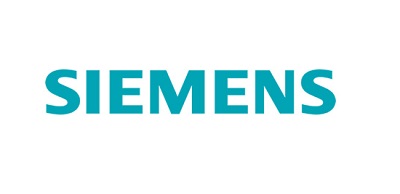1. Siemens Smart Infrastructure is introducing a groundbreaking partnership with Bember, featuring the Siemens X300 Edge Gateway solution and the edge management capabilities of Siemens Building X. Can you share insights into how this collaboration came about and its significance in advancing sustainable infrastructure?
The collaboration with Bember – a Norwegian tenant relationship management platform provider, that offers an innovative parking solution – started with the hypothesis that users would benefit from our scalable digital building platform Building X. It supports customers to digitalize, manage, and optimize building operations, allowing for enhanced user experience, increased performance, and improved sustainability. Together, we are able to utilize access control data and create a streamlined tenant experience. By combining our solutions, we can serve building owners, operators and occupants even better.
2. The Bember solution, combined of Siemens Building X and X300 Edge Gateway is designed to optimize access control and parking space utilization through innovative features like automated billing, license plate recognition, and an option for EV charging. How do you envision these technologies benefiting building owners and operators?
With this solution, building owners, operators and occupants have access to a single application for their parking journey instead of having to manage multiple applications. Streamlining the user experience allows for time savings and reduces friction points in the tenant journey.
3 The partnership emphasizes real-time data access for building managers through sensors, cameras, and smart equipment, enabling full operational control and oversight within one platform. What specific advantages does this bring to the efficient management of building infrastructure?
One of the main advantages is that the solution enhances operational efficiency. For example, building managers can ensure legal, safe and secure access to the parking space through cameras for licence plate recognition via the application. This means they have access to the right data from the access control system, which is connected to the parking infrastructure, such as cameras in this specific case. Furthermore, automated gates and the possibility of direct app billing without any additional steps ensures a great user experience.
4. In the context of the Light + Building 2024 showcase, Siemens highlights the role of technology in transforming the everyday for everyone. How does this partnership contribute to this overarching theme, and what broader impact can it have on the industry?
The collaboration highlights the digital transformation of the entire building industry. Key areas such as cloud connectivity and interoperability lie at the heart of an ecosystem strategy, with the goal of improving the building users’ experience and achieving operational efficiency through a platform-oriented approach. With the open digital business platform Siemens Xcelerator, Siemens will accelerate digital transformation and value creation for customers and partners. As Building X is part of Siemens Xcelerator, the partnership with Bember is a great example of how to combine the real and the digital worlds by utilizing access control data and creating a streamlined tenant experience.
5. Matthias Rebellius mentioned the focus on sustainability and the critical role of technology in addressing global challenges. How does the collaboration with Bember align with Siemens Smart Infrastructure’s commitment to sustainability and innovation?
Building upon the success of our innovative parking and access control solutions, we are now expanding our focus to tackle energy and sustainability challenges. This involves adding further Building X offerings – such as Energy Manager. Through the seamless integration of these solutions, we provide building owners and operators with the capability to transition energy consumption to off-peak hours and effectively oversee various systems through a unified portal. This holistic approach promotes sustainable operations.
6. Building X, part of the Siemens Xcelerator portfolio, is designed to digitalize, manage, and optimize building operations. Can you elaborate on how Building X aligns with the industry’s most open digital building platform vision and the benefits it brings for user experience, performance, and sustainability?
Building X is an open digital building platform, maximizing data insights to enhance the user experience, increase performance, and improve sustainability measures with Artificial Intelligence (AI)-enabled applications.
An example of how AI supports digital building platforms to optimize operations and sustainability: Machine Learning (ML) can improve the operation of heating, ventilation and air conditioning (HVAC) systems based on environmental and building data to detect problems before they even occur. AI algorithms can also use historical data to forecast energy consumption patterns and thus minimize costs and CO2 emissions.
Additionally, Building X has a set of Application Programming Interfaces (APIs) that allow building owners, operators and ecosystem partners to leverage the platform data in their own services and applications.
7. As Siemens Smart Infrastructure emphasizes the importance of collaboration and innovation in addressing challenges, can you share insights into how partnerships like the one with Bember contribute to industry-wide innovation and collaboration?
Traditionally, building systems have been very siloed. With a platform approach – like Building X – we can break down these siloes and utilize data across different systems to drive innovation. Partnering with software companies, such as Bember, allows us to create an enhanced user experience for building owners, operators and occupants while ensuring operational efficiency and fostering safety and security.
8. Sustainable infrastructure is indeed the way forward. How is Siemens’ technology gearing up for the likelihood of a scenario wherein something novel will have to be developed in a short amount of time?
With the open digital platform approach, customers of Building X can easily leverage the data in the platform for new use cases. For example, as the Covid-19 pandemic changed the utilization of offices dramatically, we have recently used access control real-time data from Building X to reduce food waste by 40 percent in some of our own offices.
Ultimately, we are convinced: Interoperable, flexible and open digital building platforms will shape the future, while paying off in terms of sustainability and cost efficiency.
Author: Elisa Rönkä

Elisa Rönkä
Siemens Smart Infrastructure
Elisa Rönkä is Global Head of SaaS Sales Digital Buildings at Siemens Smart Infrastructure. Together with her team she is driving forward the global sales strategy of new cloud offerings for Building X, a scalable digital building platform. Before taking over her current role in 2021, she held various positions at Siemens, where she also had a strong focus on driving the European market penetration for cloud-based products and services. Elisa Rönkä has a Master of Science degree in Accounting, Corporate law and German from the Helsinki School of Economics and Business Administration, Finland.
Company: Siemens Smart Infrastructure (SI)

Siemens Smart Infrastructure (SI) is shaping the market for intelligent, adaptive infrastructure for today and the future. It addresses the pressing challenges of urbanization and climate change by connecting energy systems, buildings and industries. SI provides customers with a comprehensive end-to-end portfolio from a single source – with products, systems, solutions and services from the point of power generation all the way to consumption. With an increasingly digitalized ecosystem, it helps customers thrive and communities progress while contributing toward protecting the planet. Siemens Smart Infrastructure has its global headquarters in Zug, Switzerland. As of September 30, 2023, the business had around 75,000 employees worldwide.




























